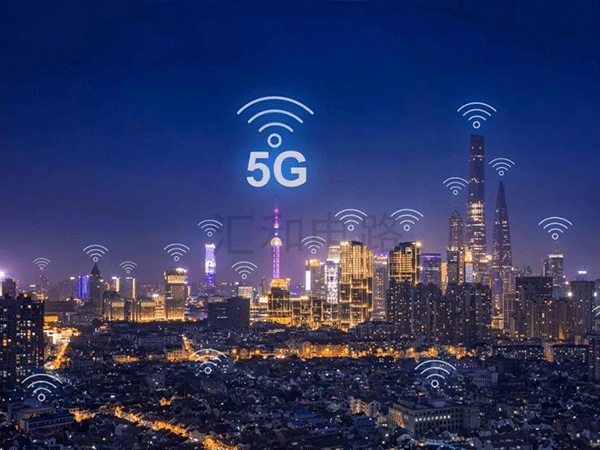5G PCB
5G technology helps VR/AR, smart city, smart agriculture, intelligent manufacturing, industrial Internet,
Car networking, self-driving, smart home and smart medical care have become a reality.

Three kinds of application scenarios of 5G network
EMBB
Mobile Broadband (large bandwidth).
3D stereoscopic video.
Ultra high definition video.
Cloud work / Cloud Entertainment.
Augmented reality.
URLLC
Low latency and high reliability (precision industry application).
Vehicle networking.
Self-driving.
Telemedicine.
Emergency task application.
MMTC
Massive machine communication (Dalian connection).
Internet of things.
Smart family.
smart city.
Intelligent building.
5G application field
5G and the Internet of things
With the promotion of the intelligent transformation of factories, the Internet of things, as a key supporting technology to connect people, machines and equipment, is highly concerned by enterprises. In the face of complex industrial interconnection requirements, 5G technology needs to adapt to different industrial scenarios and can meet most of the connection needs of the Internet of things. Therefore, 5G and the Internet of things complement each other, the landing of Internet of things applications depends on 5G to provide wireless connection solutions in different scenarios, and the maturity of 5G technology standards also needs to stimulate and promote the application demand of the Internet of things.
5G and Industrial AR
In the future intelligent factory production process, people will play a more important role. However, factory augmented reality AR will play a key role in the future, with AR devices connected to the cloud via wireless networks. The information processing function of the device needs to be moved up to the cloud, and the AR device only has the function of connection and display. AR devices will obtain the necessary information in real time through the 5G network, such as production environment data, production equipment data, and fault handling guidance information.
5G and Logistics tracking
It is expected that 5G will have deep coverage. In terms of logistics, 5G network can well meet this kind of demand. From warehouse management to logistics and distribution, we need wide coverage, deep coverage, low power consumption, Dalian connection, low-cost connection technology. In addition, the end-to-end integration of virtual factories spans the entire life cycle of products, and low-power, low-cost, and wide-coverage networks are needed to connect widely distributed goods sold. Horizontal integration within or between enterprises also requires ubiquitous networks.
5G and Industrial Automation Control
Industrial automation control is the most basic application in the manufacturing plant, and the core is the closed-loop control system. In the typical closed-loop control process, the period is as low as the ms level, so the communication delay of the system needs to reach the ms level or even lower to ensure the accurate control of the control system. At the same time, it also has high requirements for reliability. If the time delay in the production process is too long, or the error of control information in data transmission may lead to production shutdown, it will cause huge financial losses.
5G and Smart Home
5G commercial will break through the disadvantages of different standards and help to connect more kinds of devices. For smart homes that need different devices to interconnect, it can make the access of more household devices possible. The intelligent scene extends from the office environment to the home environment, and empowers the family scene from the three aspects of life, entertainment and security, which has become an important direction of the development of the smart home market. In the future, in addition to mobile phones, smart speakers will become the most likely interface for smart home operation.
5G and autopilot
In order to achieve self-driving, we first need efficient vehicle networking, which needs the support of 5G network. Because unlike 4G, which mainly focuses on human-to-human communication, 5G forms an end-to-end ecosystem that enhances mobile bandwidth, with peak rates up to 20GB picks, lower latency (≤ 10ms), higher reliability (> 99.99%) and larger bandwidth (1 million terminals per square kilometer). With the official commercial use of 5G in 2020, it is expected to usher in L4-level autopilot.
Demand for PCB in 5G Industry
Compared with 4G, 5G has higher microwave frequency, faster data transmission and larger data flow. 5G era needs more high-frequency and high-speed PCB to support. The demand for printed circuit board(PCB) space of 5G is about 3 times that of 4G, and the demand for high-frequency copper clad laminate is 4-8 times. The price of high-frequency and high-speed substrate is still 10-40 times higher than that of ordinary FR-4 substrate.
With the application of 5G communication technology, the frequency of electronic products is getting higher and higher. Printed circuit boards need not only electrical connectivity, but also signal transmission requirements, need to pay attention to signal transmission loss, impedance and time delay consistency, and put forward clear requirements for the materials of printed circuit boards, such as Dk (dielectric constant) and df (dielectric loss). The Dk and DF values of the materials are required to be low. In order to meet the requirements of Dk and df, it is necessary to modify the resin and add fillers.




